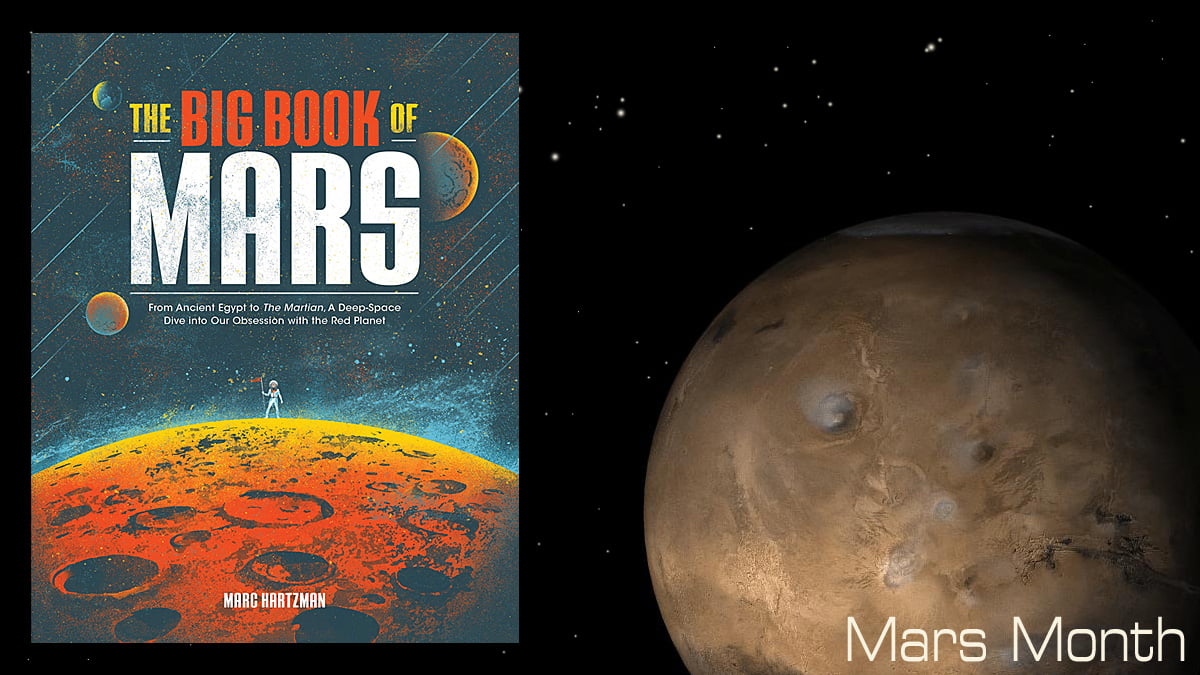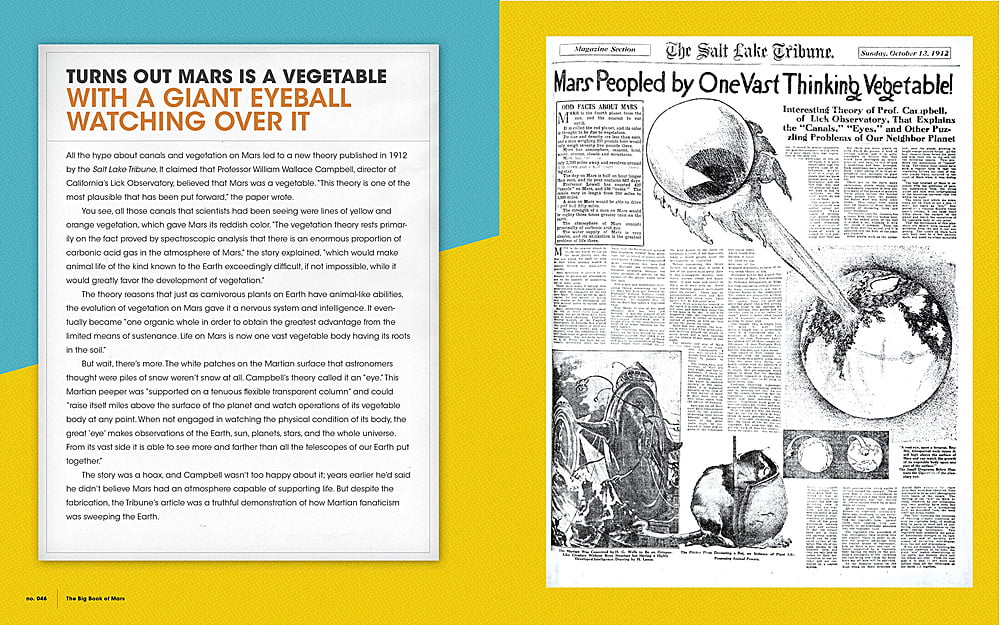
Throughout July, GeekMom is preparing for the planned launch of the Perseverance rover on July 20th with Mars Month, a month filled with Mars-themed content. Be sure to follow the Mars Month tag to find all of this month’s content so far in one place. Today I am reviewing The Big Book of Mars by Marc Hartzman.
Please note: This post contains affiliate links.
The Big Book of Mars is an in-depth look at the history of our obsession with Mars, focusing on the more outlandish side of things than the typical hard science covered in many other Mars-related books. This means The Big Book of Mars has chapters that cover B-movies and UFO sightings, alongside the usual guides to Mars missions past and present. Author Marc Hartzman has a history of writing books about unusual subjects, and this volume about Mars is no exception.
The first two chapters tackle our historical obsession with Mars dating right back to the earliest civilizations and bringing us up to the space age. Here, we learn about the theories and misunderstandings about the Red Planet that previously informed our thoughts about this celestial neighbor. Naturally, the canal theory so beloved by Percival Lowell gets plenty of page space, but also included are Marconi’s claim to have received contact from Martians (at the time supported by both Tesla and Edison) and a scheme to use a giant mirror in Nevada to “wink” at Mars. All sorts of odd ideas were thought up in the early years of space research. A “census” of the entire universe was conducted using mathematics in 1838 and in 1909, and Harper’s Weekly asked the public for ideas of what questions scientists should ask Martians. The responses prove that the people of 1909 were no more sensible than those who voted for Boaty McBoatface in 2016 with proposed questions including “should women smoke?” and “have you planted your spring beets yet?”

Now moving on to cover the era of the Space Race, The Big Book of Mars tackles NASA’s expeditions to the Red Planet but also the role that Satanism played in the formation of the Jet Propulsion Laboratory, the infamous Martian “face,” and naming conventions for craters, canyons, and rocks. Did you know there is a rock on Mars named Cranberry Sauce? Or that the wheels on Curiosity leave behind a pattern on Morse Code that spells out JPL as it travels across the surface? A key story running through these pages is the search for life, including the controversial findings by the Viking lander that are still up for debate today.
Later chapters cover the influence of Mars on pop culture. H.G. Wells’ The War of the Worlds is clearly the most famous example and is covered in detail, particularly the famous radio broadcast by Orson Welles (which may not have been quite the mass panic-inducing phenomena the papers claimed), but the book also covers Flash Gordon, John Carter of Mars, and the world of terrible Mars-themed B-movies before getting more up-to-date with The Martian and Mars Attacks! Also looked at in-depth is the UFO phenomena and how it has evolved through the decades, alongside equally evolving conspiracy theories that never quite seem to go away. Of course, these chapters could never be all-encompassing; I could name you half a dozen Mars-related TV shows, books, and more that are never given a mention along with many UFO stories worth noting, but the book gives a great overview of the subject while never becoming repetitive.

The final chapter looks to the future, discussing the obstacles to long-term Mars missions, how we might go about terraforming the Red Planet, and the impact of these projects on the human body. All manner of outlandish-sounding ideas are proposed here, along with inspiring concept art showing the sort of Mars colonies we all grew up imagining ourselves one day bouncing around in a spacesuit. These ideas seem somewhat preposterous to us today, but the idea of casually flying over the Atlantic in a human-built vehicle would probably have sounded equally preposterous to someone living in the 1850s…
The Big Book of Mars is filled with photos, posters, and scans of old newspapers, letters, and magazine articles—the tabloids/BuzzFeed of the time—and it is these that really bring the whole thing to life. It’s one thing to know that our great grandparents may have believed theories about Martian building canals, but another to see the actual headlines they may have been reading over breakfast. Many of the ideas in these pages seem quite mad to a modern-day reader, but the author never makes fun of them. Rather he explores how those theories came about and the new science that came along to change them. It’s quite remarkable to note how much our knowledge of Mars has evolved in less than 150 years.

The Big Book of Mars is a fascinating book that tackles a familiar subject in a whole new way. It explores the crazier side of Martian exploration without ever belittling those who were attempting to expand our knowledge with far less information and technology than we have access to today, and it does so in a way that is both easy and incredibly fun to read. It is the kind of book that makes you want to put it down every few sentences to share a weird or interesting fact you just learned with whoever happens to be nearby, and I highly recommend it.
GeekMom received a copy of this book for review purposes.


